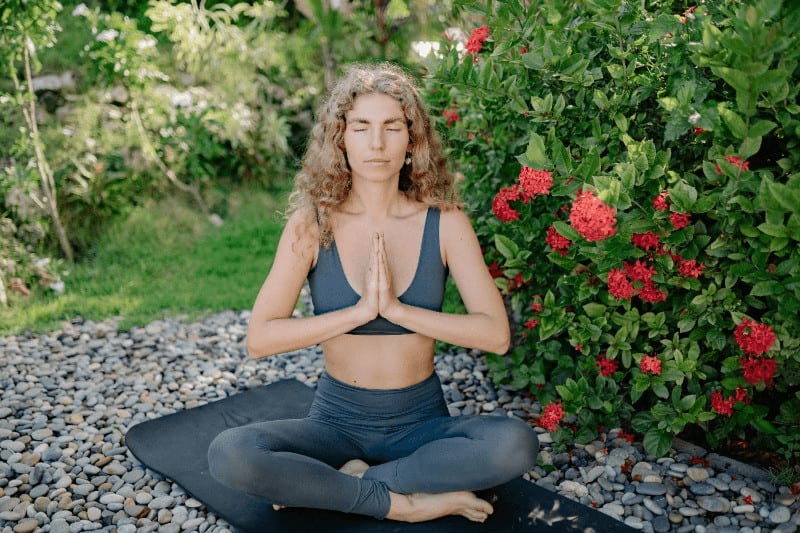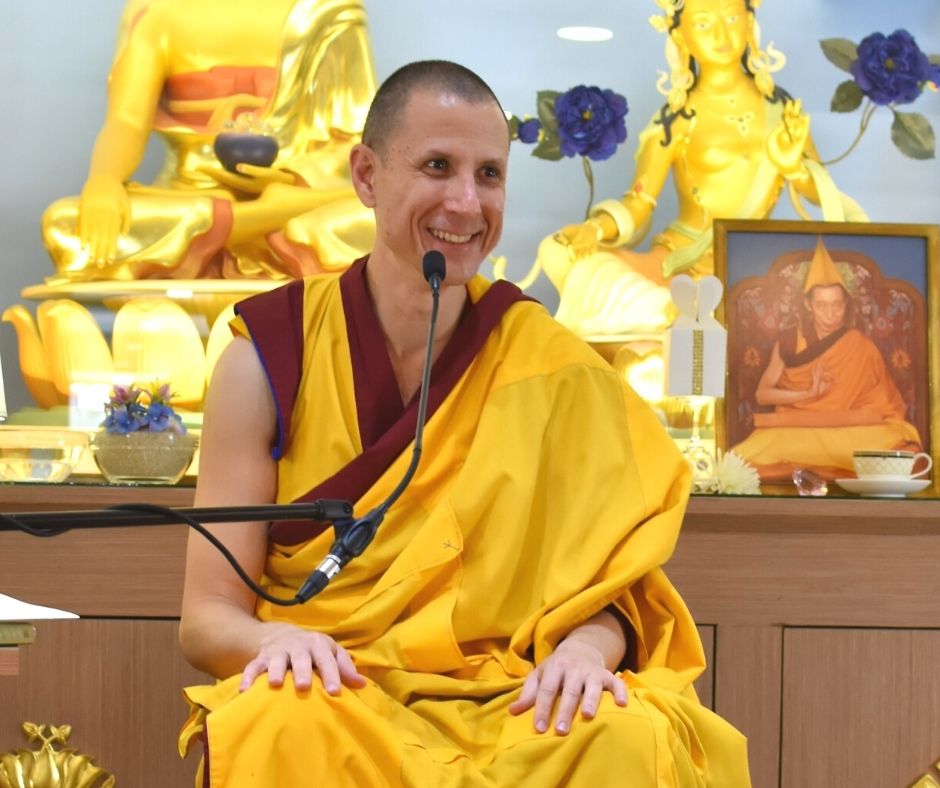Namaste Yoga: My Journey to Understanding Its True Essence
The post Namaste Yoga: My Journey to Understanding Its True Essence appeared first on The Yoga Nomads.

I have been exploring the rich layers of the term ‘Namaste.‘ It is a motion that connects the mind and soul and has a deeper meaning than just a simple greeting. It is a divine bridge that connects minds, acknowledging the sun-like light and truth in each other, as taught through the mudra by our teachers.
In this article, I aim to clarify common misunderstandings about the use of namaste yoga by teachers and practitioners. My goal is to foster a deeper awareness of the unity that this ancient practice encourages in our daily lives and thoughts.
Understanding ‘Namaste’ in a yoga class goes beyond echoing a word; it’s a unique venture that reflects life’s interconnectedness—a profound recognition of our shared human background, often sealed with a mudra and accompanied by the resonant sound of unity.
Hopefully, through my insights, you’ll gain a clearer view of how this respectful term, often used by a student to praise their teacher, enriches the yoga journey. As one bows in gratitude, the divine is acknowledged through the gesture, and the hands come together to seal the connection.

The Essence of Namaste
Namaste, often heard at the end of a yoga class, is more than just a word; it’s a philosophy deeply rooted in the divine, embodying the respect shown when we bow to each other. It bridges human connections through praise and recognition of our shared essence, a bow to the term of our common humanity.
Respectful Greeting
In India, namaste is a common, respectful welcome. When you say it, you’re offering a bow as a sign of courtesy. This culture and tradition extends beyond mere politeness. It reflects centuries-old wisdom, a term that values praise and kindness.

Fodor's Essential India: with Delhi, Rajasthan, Mumbai & Kerala (Full-color Travel Guide)
Belief in Oneness
The word namaste carries the belief in oneness. It suggests that everyone shares a divine connection. Acknowledging this bond promotes love and gratefulness among people.
Soulful Acknowledgment
Saying namaste is like speaking directly to another’s spirit. It’s an acknowledgment from one soul to another. I find this term’s roots humbling and profound because it transcends physical appearances, focusing instead on our inner selves.
In my experience, using the term has always been more than just saying hello or goodbye; it’s about connecting at the heart chakra level with someone else’s essence.

SERPENTINE Relaxing Unisex Essential Oil Soy Candle by Kindred Essence | for men | for women |...
Delving into the Namaste Gesture
Palms Pressed Together
The namaste yoga gesticulation involves pressing the palms together. This term, sign or motion, is performed at the heart chakra term. It’s believed to enhance the flow of divine love. By joining hands in this prayer position, a connection is made between two individuals.
I find that when I press my palms together at my heart, there’s a sense of warmth and energy that seems to encourage a feeling of peace and devotion within me.
Bowing the Head
Bowing one’s head while performing it adds depth to its meaning. It represents spirituality and humility. This simple act can awaken a recognition of our shared human experience.
For me, bowing my head helps me focus inwardly and creates a moment of reflection about my place in the world.
Smile Adds Warmth
A smile can transform the namaste yoga gesticulation. When paired with this motion, it offers a friendly welcome. The sincerity behind a smile communicates openness and kindness.
Whenever I greet someone with namaste accompanied by a smile, it feels like I’m extending an invitation for genuine connection.
The Cultural Significance of Saying Namaste
Namaste yoga is more than a physical practice; it’s a respectful exchange rooted in tradition. It spans from casual hellos to the reverence of formal events.
Customary Asian Greeting
Namaste is deeply ingrained in Asian cultures. It’s used daily by millions. In India, for instance, people greet each other with it regardless of the time or place. This gesture transcends age and social status, symbolizing unity and recognition among individuals.

Asian Popular Culture (International Communication and Popular Culture)
Beyond Casual Hellos
The use of Namaste extends to various formalities. During religious ceremonies or cultural events, it holds a place of honor. I’ve observed this firsthand at weddings where Namaste signifies blessings and goodwill between families.
Admiration and Hospitality
Namaste is synonymous with hospitality. It’s how hosts welcome guests into their homes. The gesture implies, “I bow to you,” reflecting a deep sense of regard for another person’s essence.
In my travels through Nepal, I was often greeted with it coupled with warm smiles, demonstrating the locals’ genuine hospitality and kindness towards visitors like myself.

Nepal - Culture Smart!: The Essential Guide to Customs & Culture
A Global Salutation
Today, Namaste has crossed borders, becoming a global parlance in yoga communities worldwide. It connects practitioners not just physically but spiritually as well.
Pronunciation and Proper Use of Namaste
Correct Pronunciation
Pronouncing ‘namaste’ correctly is crucial. Say it as ‘nuh-muh-stay.’ This Sanskrit term deserves glory in its utterance. Mispronouncing can show disrespect or lack of awareness.
Not sure how to pronounce it? Check out this helpful video!
Appropriate Usage
Namaste is used at specific times. It’s common at the start or end of yoga classes. In meetings, it can signify admiration and a humble greeting.
Intention Matters
The intention behind it is as important as the word itself. When I say namaste, my intention must align with praise and connection. This gesture embodies a deep meaning that transcends language.
In my experience, understanding the depth of ‘namaste’ has enriched my interactions in yoga communities. Acknowledging someone’s presence sincerely creates a bond beyond just physical practice.
Using ‘namaste’ appropriately shows cultural sensitivity and mindfulness. I’ve noticed it fosters a sense of community and mutual admiration in diverse groups.
Exploring the Five Elements of Namaste
Namaste yoga connects us to nature’s five elements. These elements shape our practice and spiritual journey.
Earth in Our Practice
The earth element represents stability and grounding. During yoga, we feel the earth beneath us. It supports our poses and reminds us of our physical body’s strength.
Water Flows Within
Water signifies flexibility and fluidity. In yoga, it mirrors our ability to adapt. We move smoothly from one pose to another, like water flowing in a river.
Fire Fuels Transformation
Fire embodies energy and transformation. My yoga session intensifies as I focus on breathing exercises that stoke my inner fire. This element is crucial for personal growth and vitality during yoga.
Air Lifts the Spirit
Air symbolizes breath and life force. Each inhale brings fresh energy, and each exhale releases tension. Conscious breathing is key for a fulfilling namaste yoga practice.
Space for Spiritual Expansion
Space relates to consciousness and freedom. Yoga provides room for reflections to settle, allowing spiritual expansion. Embracing space helps deepen my connection with the universe.
The Distinction Between Namaskar and Namaste
Namaskar is often reserved for deities, while Namaste is a common greeting. The context of the interaction determines which form to use.
Formality in Greeting
Namaskar carries a weight of formality. It’s typically used when addressing someone or something with a higher status. In my practice, I reserve this term for religious contexts or when showing deep admiration.
Context Matters
Understanding the setting is crucial. If I’m at a temple or a spiritual event, I’ll choose Namaskar over Namaste. This choice honors the sanctity of the place and the deities within.
Time and Hierarchy
The time of day can influence my decision between these greetings. Mornings have their own rituals and might lean towards using Namaskar. Similarly, social hierarchy plays a role; elders or teachers receive a more formal salutation from me.

Expressions and Symbolism in Yoga Practices
Yoga practice intertwines physical postures with profound symbolism. Namaste yoga enriches this connection, integrating expressions that deepen spiritual awareness.
Yoga Poses and Symbolism
Each yoga pose carries a symbolic message. When I perform Namaste during my yoga sessions, it’s more than a gesture—an expression of admiration and unity. This salutation embodies the idea that there is a divine spark within each of us.
Incorporating poses like the Lotus or Warrior, I’m not just stretching my body. These positions represent aspects such as purity and inner strength. They remind me to carry these qualities into my daily existence.
Anjali Mudra’s Spiritual Role
Anjali Mudra, where palms meet at the heart center, enhances the focus on spirituality. It’s often used alongside Namaste to signify praise and gratitude towards others and oneself.
During practice, this hand position promotes centeredness and calm. It serves as a physical reminder to stay present and connected to my surroundings.
Reverence Through Practice
Every movement in yoga is an act of humility. As I transition from one pose to another, I reflect on the virtues they symbolize—like reverence for life itself.
The Downward Dog or Child’s Pose aren’t just exercises; they’re gestures of surrendering ego. They teach me humility by reminding me that there is something greater beyond myself.
Incorporating Namaste into Yoga Practice
Honor Tradition and Participants
I begin and end each yoga class with the word “Namaste.” This simple act pays homage to an ancient tradition. It also shows recognition to fellow yoga students and the yoga teacher. The gesture fosters a sense of community.
Harmonize Breath With Movement
During Namaste, I concentrate on syncing my breath with the motion of my hands. This synchronization is essential in namaste yoga. It ensures that the essence of unity is woven into every part of the practice.
Maintain Mindfulness
Mindfulness permeates my actions as I hold onto the meaning behind Namaste. I remember that it symbolizes unity and connection with others. Throughout my practice, this understanding deepens my focus and intention.
In my practice as a yoga teacher, starting with Namaste sets a tone of reverence for our shared human background. It’s a reminder that we are all connected, not just in this room but universally.
Conclusion
I’ve journeyed through the profound layers of ‘Namaste,’ unveiling its essence, cultural significance, and integration into yoga practice. I’ve clarified the nuances between ‘Namaste’ and ‘Namaskar’ while emphasizing the gesture’s symbolic richness.
My exploration of the five elements inherent in ‘Namaste’ underlines its depth beyond a mere salutation. It’s clear that this term and gesticulation transcend linguistic boundaries, embodying recognition, humility, and the unique spark within each individual.
As I reflect on this exploration, I invite you to embrace it with genuine understanding and incorporate it mindfully into your yoga journey.
Let’s praise the tradition it represents and connect more deeply with ourselves and others. Share your insights or start a conversation about ‘Namaste’—your perspective enriches our collective understanding.
Frequently Asked Questions
What does Namaste mean in yoga?
Namaste signifies praise and gratitude, acknowledging the unique spark within each person during yoga practice. When practicing yoga, saying “Namaste” at the end of a session is a way of showing appreciation for the practice, the teacher, and fellow practitioners while also recognizing the interconnectedness of all beings.
Why do we say Namaste?
Namaste expresses politeness, courtesy, praise, and hospitality, typically when welcoming someone or saying goodbye. This practice is deeply rooted in ancient Hindu scriptures such as the Taittiriya Upanishad, which emphasizes the importance of treating guests with great admiration and hospitality, even likening them to gods with the phrase “Atithi Devo Bhava.”
What does Namaste mean spiritually?
Namaste is a spiritual sign that expresses gratitude, respect, and oneness. It recognizes the unique spark within every human being and the interconnectedness of all things. Namaste is a beautiful reminder that we should treat each other with kindness, love, and respect, acknowledging the divinity within ourselves and within all creation.
How do I reply to namaste?
To reply to someone who has greeted you with “Namaste,” you can respond by saying “Namaskarah.” It is important to note that this response is typically used when speaking to someone older than you. The addition of “karah” in the response signifies that you not only acknowledge the person’s divinity but also show them more respect due to their age and wisdom.

 ValVades
ValVades 

































